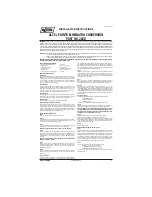
The transmission downshifts to first
gear and returns to drive mode (D)
when the vehicle comes to a
complete stop and the vehicle speed
is about 6 mph (10 km/h).
If there is a problem in the
transmission while you are driving
with the paddle shifters, the D
indicator flashes, the D-paddle shift
mode is canceled, and the
transmission returns to drive mode
(D).
Each time you pull either paddle
shifter, the transmission shifts one
gear up or down. If you want to shift
up or down more than two gears, pull
the paddle shifter twice, pause, and
then pull it again.
The transmission remains in the
selected gear if you do not accelerate.
You cannot downshift with the
paddle shifter before the engine
speed reaches the upper limit of the
lower gear. If you try to do this, the
gear position indicator will flash the
number of the lower gear several
times, then return to a higher gear
position.
Also, you cannot upshift with the
paddle shifter before the engine
speed reaches the lower limit of the
higher gear.
Downshifting with the paddle shifter
allows you to increase the engine
braking when going down steep or
long hills, and provides more power
when climbing uphills. You can
upshift the transmission manually to
reduce the rpm. Driving in the
higher gear helps fuel economy.
The transmission control system
monitors the accelerator pedal use
and your driving conditions. When
you press the accelerator pedal as in
normal driving, the system judges
that you are driving at a constant
cruising speed without using the
paddle shifters. Under these
conditions, D-paddle shift mode is
canceled, and the transmission
automatically returns to drive mode
(D).
Driving with the Paddle Shifters (Sport only)
D
riv
ing
163
07/06/28 20:37:29 31SAA610 0168
















































